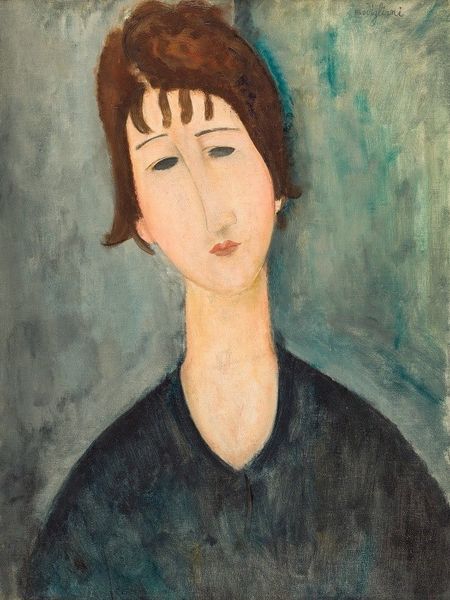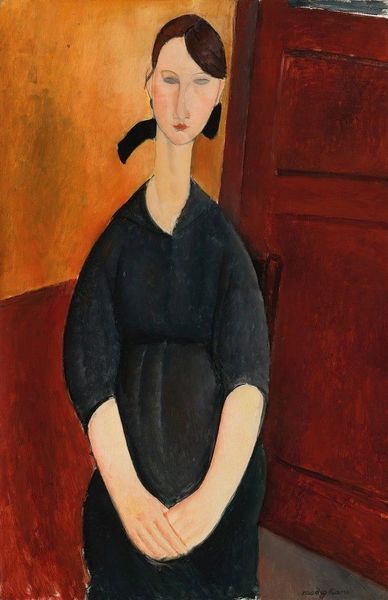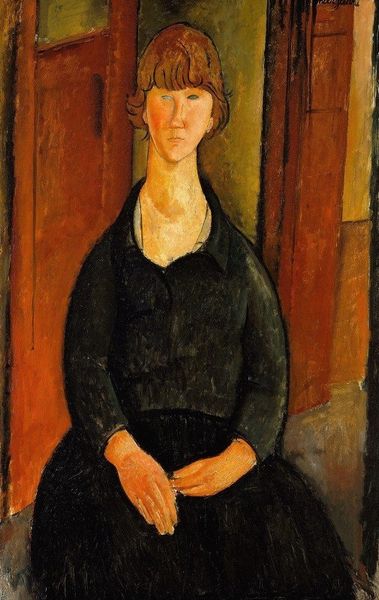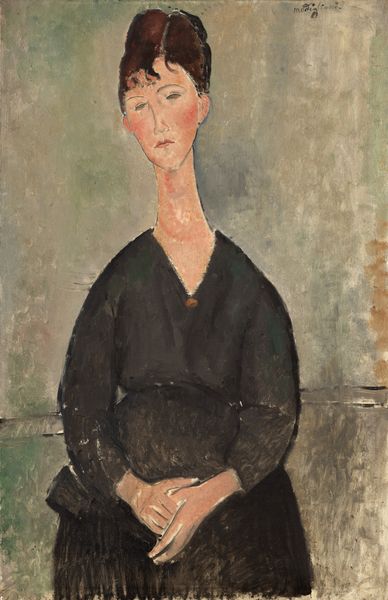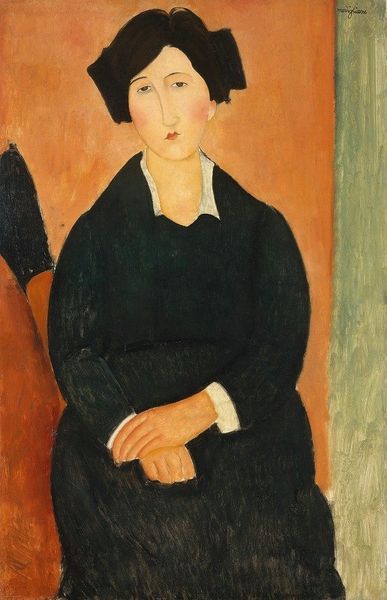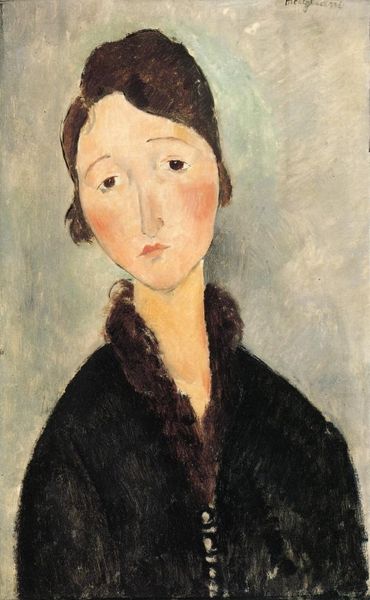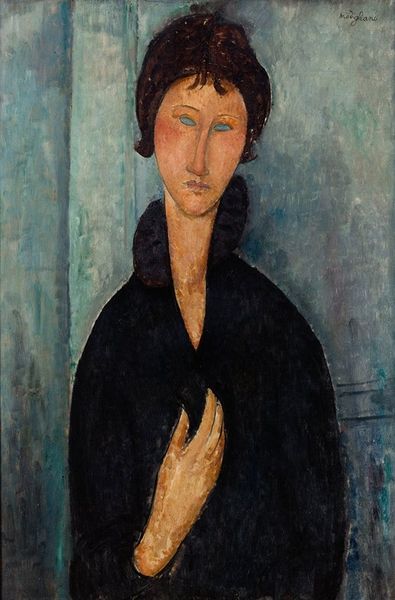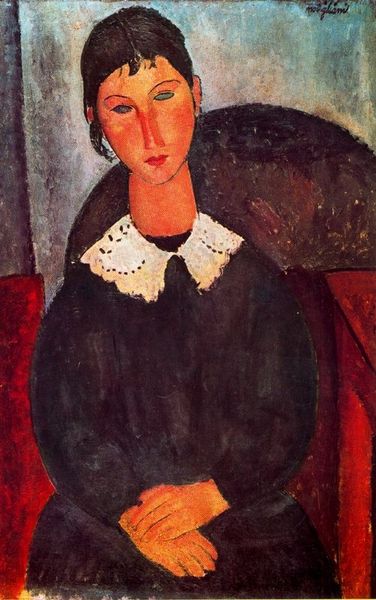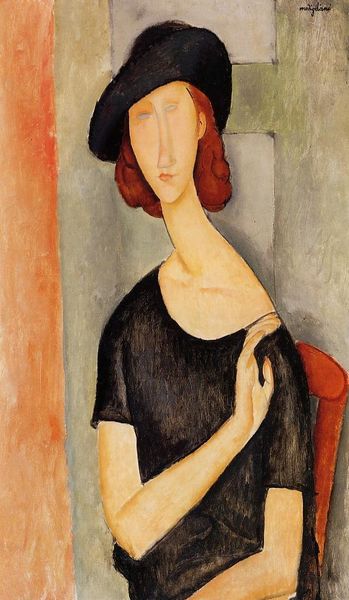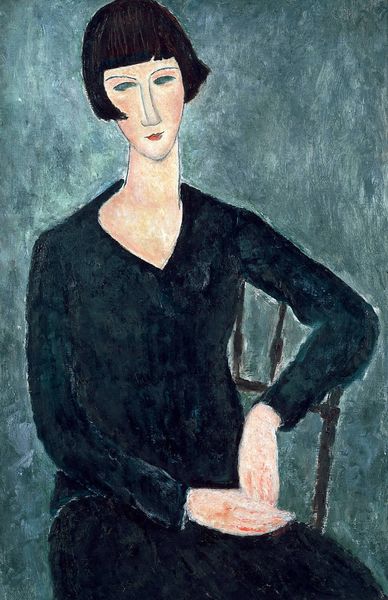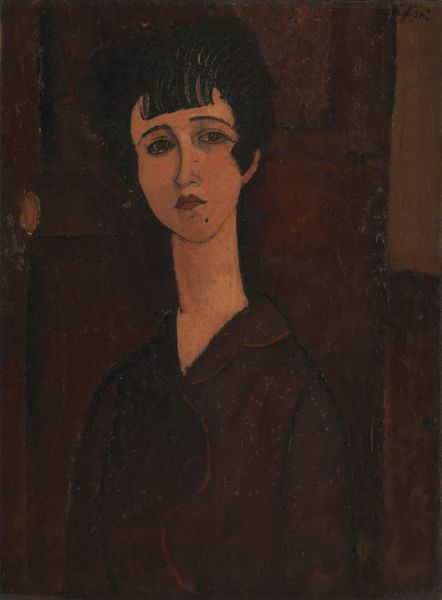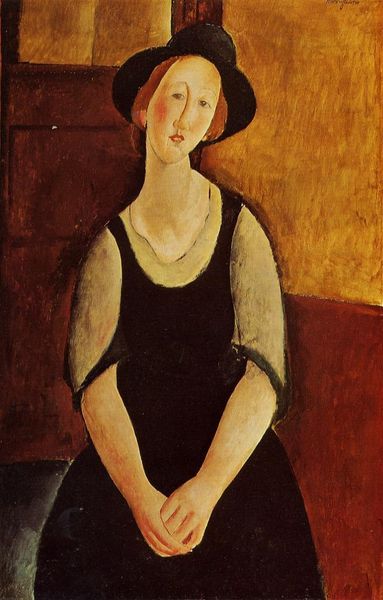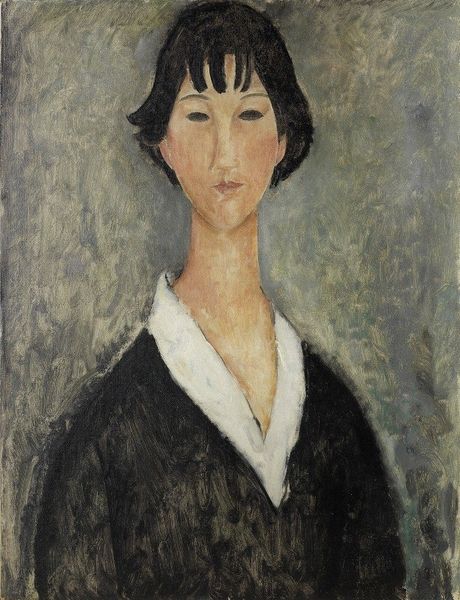
painting, oil-paint
#
figurative
#
painting
#
oil-paint
#
figuration
#
oil painting
#
expressionism
#
portrait drawing
#
facial portrait
#
portrait art
#
modernism
#
fine art portrait
Copyright: Public Domain: Artvee
Curator: Take a look at this poignant painting by Amedeo Modigliani. It’s titled "Young Woman of the People" and dates back to 1918. Modigliani used oil paint here, with a distinct approach. Editor: My initial impression is one of somber dignity. The muted palette and the woman's averted gaze create a powerful sense of introspection, it’s her materiality I really want to dive into! Curator: Modigliani’s portraits from this period often depicted the working class, reflecting the social upheavals following World War I. This woman’s dark shawl and dress could be seen as signifiers of mourning or hardship. Editor: The application of paint seems deliberate, almost frugal. Look at how he models form without heavy impasto. I wonder, was this born of material scarcity during wartime or simply a stylistic choice rejecting excess? It challenges our notions of painting, almost embracing the flatness. Curator: Considering Modigliani's struggles at the time, and the scarcity of quality art supplies, one can interpret this choice of "flatness" as more than a style, perhaps a testament to resourcefulness or the limitation he has, as an artist, from his environment.. His signature elongation of features, seen so clearly here in the face and hands, lends her an air of both vulnerability and grace, elevating her status even within modest representation. Editor: The social context seeps through in interesting ways! The composition keeps her grounded – those squared off hands holding tight in her lap speak of resilience, a working life perhaps etched into her very posture. There is such simplicity in the production, creating that solemn but captivating presence of the portrait. Curator: Precisely. And to consider the contemporary viewers, exhibitions like these became increasingly important social and cultural spaces of encounters, the portrait providing the working class woman the deserved visibility and representation, even immortalizing her. Editor: Examining Modigliani’s painting this way gives us insight, I think. The materiality and the social conditions under which it was produced enhance its resonance and help us feel her palpable, quiet strength. Curator: Indeed, it allows us to see the subject and appreciate Modigliani's place as an artist engaged with his historical reality, reflecting those realities back to his audience, challenging preconceptions and expanding understandings of the modern era.
Comments
No comments
Be the first to comment and join the conversation on the ultimate creative platform.
